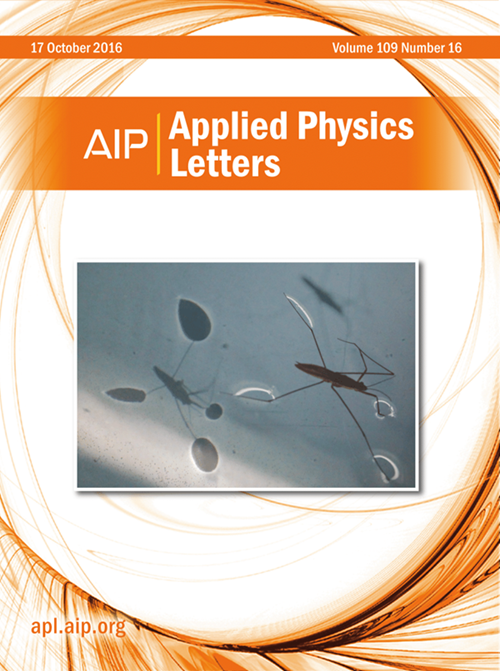Wide bandgap perovskite photovoltaic on rigid and flexible substrates for indoor light harvesting
IF 3.6
2区 物理与天体物理
Q2 PHYSICS, APPLIED
引用次数: 0
Abstract
Perovskite photovoltaics (PPV), due to their compatibility with a flexible substrate, low cost, and high indoor performance compared to existing inorganic and organic photovoltaic technologies, are emerging as a potential candidate to power the internet of things (IOT). Dual-cation and mixed halide [FA0.8Cs0.2Pb(I0.62Br0.38)3] (FACsPbIBr) based wide bandgap perovskite composition's long-term stability and energy bandgap made them ideal for indoor applications. In this work, we have developed the PPV devices using flexible substrate based on FACsPbIBr perovskite composition for indoor application. PPV were also fabricated on rigid substrate as control devices. The flexible and rigid substrate-based PPV devices delivered power conversion efficiency (PCE) of 17.02 (36.33)% and 18.90 (37.25)%, respectively, under AM1.5G (LED 2700 K, 1000 lux). Remarkably, flexible-PPV devices delivered open-circuit voltage (VOC) of 1.11 V under indoor light (1000 lux). The study suggests the potential of flexible substrate-wide bandgap perovskite-based PPV for futuristic IOT applications.用于室内光采集的刚性和柔性基板上的宽禁带钙钛矿光伏
与现有的无机和有机光伏技术相比,钙钛矿光伏(PPV)由于其与柔性基板的兼容性、低成本和高室内性能,正在成为物联网(IOT)的潜在候选者。基于双阳离子和混合卤化物[FA0.8Cs0.2Pb(I0.62Br0.38)3] (FACsPbIBr)的宽禁带钙钛矿组合物的长期稳定性和能量带隙使其成为室内应用的理想选择。在这项工作中,我们开发了基于FACsPbIBr钙钛矿成分的柔性衬底的PPV器件,用于室内应用。PPV作为控制器件也被制作在刚性衬底上。基于柔性和刚性衬底的PPV器件在AM1.5G (LED 2700 K, 1000 lux)下的功率转换效率分别为17.02(36.33)%和18.90(37.25)%。值得注意的是,柔性ppv器件在室内光照(1000勒克斯)下的开路电压(VOC)为1.11 V。该研究表明,基于钙钛矿的柔性基板宽带隙PPV在未来物联网应用中的潜力巨大。
本文章由计算机程序翻译,如有差异,请以英文原文为准。
求助全文
约1分钟内获得全文
求助全文
来源期刊

Applied Physics Letters
物理-物理:应用
CiteScore
6.40
自引率
10.00%
发文量
1821
审稿时长
1.6 months
期刊介绍:
Applied Physics Letters (APL) features concise, up-to-date reports on significant new findings in applied physics. Emphasizing rapid dissemination of key data and new physical insights, APL offers prompt publication of new experimental and theoretical papers reporting applications of physics phenomena to all branches of science, engineering, and modern technology.
In addition to regular articles, the journal also publishes invited Fast Track, Perspectives, and in-depth Editorials which report on cutting-edge areas in applied physics.
APL Perspectives are forward-looking invited letters which highlight recent developments or discoveries. Emphasis is placed on very recent developments, potentially disruptive technologies, open questions and possible solutions. They also include a mini-roadmap detailing where the community should direct efforts in order for the phenomena to be viable for application and the challenges associated with meeting that performance threshold. Perspectives are characterized by personal viewpoints and opinions of recognized experts in the field.
Fast Track articles are invited original research articles that report results that are particularly novel and important or provide a significant advancement in an emerging field. Because of the urgency and scientific importance of the work, the peer review process is accelerated. If, during the review process, it becomes apparent that the paper does not meet the Fast Track criterion, it is returned to a normal track.
 求助内容:
求助内容: 应助结果提醒方式:
应助结果提醒方式:


